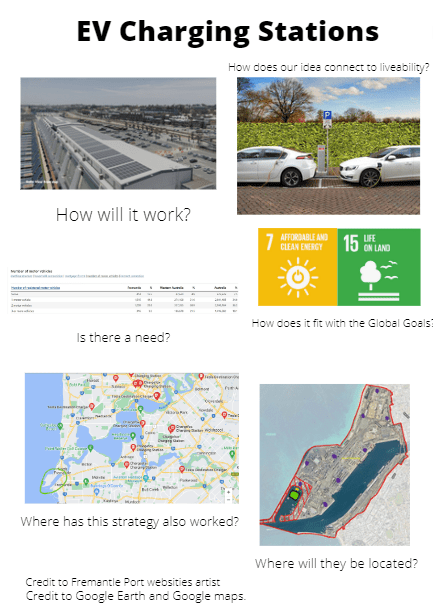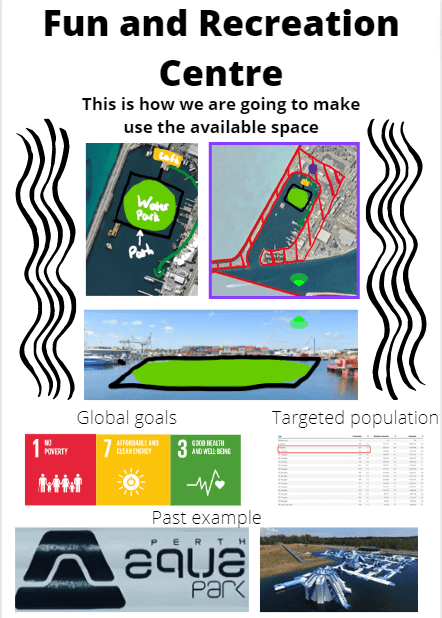In year 7 we were introduced to “Project Utopia” where Fremantle Port would be changed into something sustainable and efficient in response to the future move of Fremantle Port to Kwinana. Overall, this project has improved my questioning and responding skills through all of the questions we have been asked. Grade-wise I felt as if I had trouble with TEEL paragraphs at the start of the project but eventually, I improved my writing. Throughout Project Utopia, we were given many different groups of people that we needed to collaborate with, this improved our connection within our tutor group.
Project Utopia Assessments
(REFLECTION)
The Giver

The Giver is a novel based on a controlled society, supposedly a perfect Utopia yet even though they rid emotions and gave specific jobs. A boy named Jonas was lucky enough to be picked for a special role as the keeper of memory. This job requires mental and physical strength to push through all of the memories ever experienced within the history of their world. To solve this problem of fun deprivation Jonas teamed up with his mentor to relate all of the memories to the rest of society to have them understand fun and happiness. This novel was used to give us a better understanding of utopias and how a utopia is the equivalent of the impossible.
Liveability Factors

At the start of the year during HASS, we focused on liveability factors such as objective and subjective factors, understanding that just because someone can measure facts you can also measure opinions. This helped us when we were searching through the census to try and find the most of the Fremantle citizens average age, reminding us to acknowledge the age biases that some may have.
Vision board


To show our research we created a board with photos to give the audience an immersive experience to understand what we are trying to create. We were trying to create many but mine was a water park. This links to the ideate stage and some of the prototype stage.
Fremantle Report

During this report we teamed up into the same groups as the vision board project, we had to create a report with all of our ideas and how they would benefit the Fremantle area. Sadly in our report, Edward added a photo that pushed the map down hiding it. Because we made this only had two ideas on our vision board meaning that two people had to create new ideas.
Urbanized

Urbanized is a documentary that is based on the urbanisation of many different areas to improve liveability quality. The ones that I chose were Detroit and cape town, the solution for cape town was safety in numbers and Detroit was the fresh food gardens for access to fresh food.
Pitch
The pitch was the final of the tasks this was the summary of what we had worked on for three terms. To acknowledge, the work we had done the teachers invited the parents to listen to our hard work. This was personally the hardest project I have ever worked on due to my lack of experience when it comes to public speaking. I would have preferred to have completed this by recording, but I guess it did help me for future speeches.
Design Thinking Process
(Reflection)
Stage 1 Empathise
The Empathise stage is where design teams research to understand their user’s needs. They set assumptions to obtain insights by observing and consulting with their team members. Guest speakers come in to discuss our project objective, which is to design the future of Fremantle Port. They showed us the area we were going to be designing our project in, and the things we should look out for, such as places with cultural heritage that we must keep intact as they are remnants of our history. To conserve materials they also informed us about the infrastructure that is already there such as roads and buildings that can be recycled and worked into the new Fremantle port. Personally, the speech the guest speaker prepared was to fast to take notes for due to the quick slide speed preventing us from listing scary details. For a while we were in different classes to our tutor groups engaging with other people and brainstorming in a more diverse way.
Stage 2 Define
For the Define stage of the design thinking process, we were taken to the Fremantle port itself to get a feel for its large mass of land, throughout this excursion we had small booklets for taking notes and answering certain questions relating to Fremantle Ports history. During the excursion, we had to briefly think about the ideas that we developed in the different classes and figure out if they were viable in the way we thought they would be. We were given a set of prompts that would challenge what we could work on for the future of Fremantle. Some of these questions revolved around how we can preserve the cultural heritage of Fremantle, but in our case, we worked on a question based around “how we can provide fun and recreation to Fremantle Port”. During the define stage, I started to feel that the area of Fremantle wasn’t perfect for the water park due to its strong winds being off the coast.
Stage 3 Ideate
For the Ideate stage of the design thinking process, which is considered the brainstorming section, we spent our time researching the idea, the cons and pros, the possibility of even managing to open a Water park in the area and challenging our thought process. We would look up problems we may encounter in the future, whether the idea supported liveability, and whether it supported global goals. After consulting with my teammate Edward Liang he managed to find every single way to prove that a water park isn’t suitable for Fremantle port, but after time I managed to convince him that it was viable. Thanks to Edward Liang by the end of his doubt period the entirety of our research was almost done.
Stage 4 Prototype
For the prototype stage, we made a real-life scaled-down model of what the water park would be in the area, a 3D model, and a Co-space. this page helped us flesh out what exactly we wanted I to look like and how it was meant to function in further detail. Our model was a combination of foam core and plastic (PLA) from our 3d printed model. some problems that occurred with the 3d printing were warping and colour change. Overall designing and printing was a difficult process but with Edwards help the designing went pretty smooth.
Cospaces
https://edu.cospaces.io/Studio/Space/r7BafbTXsmjIsz8F
Stage 5 Test
Sadly due to the lack of materials and access to Fremantle port, we are unable to test our idea within Fremantle in the future.
Very knowledgeable.